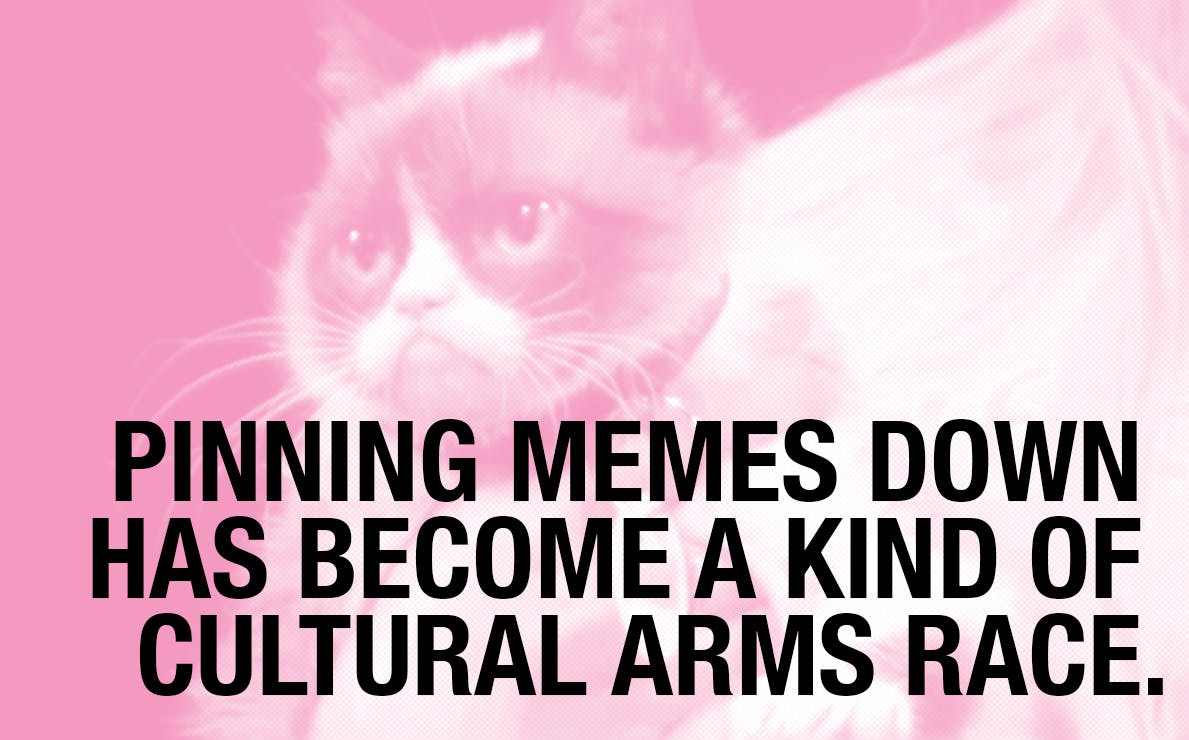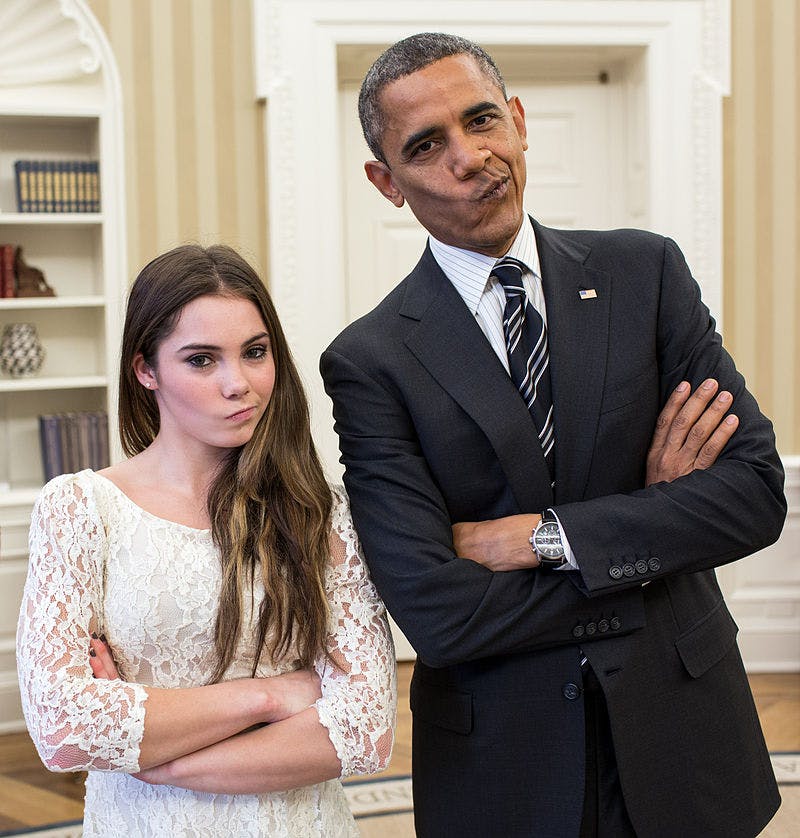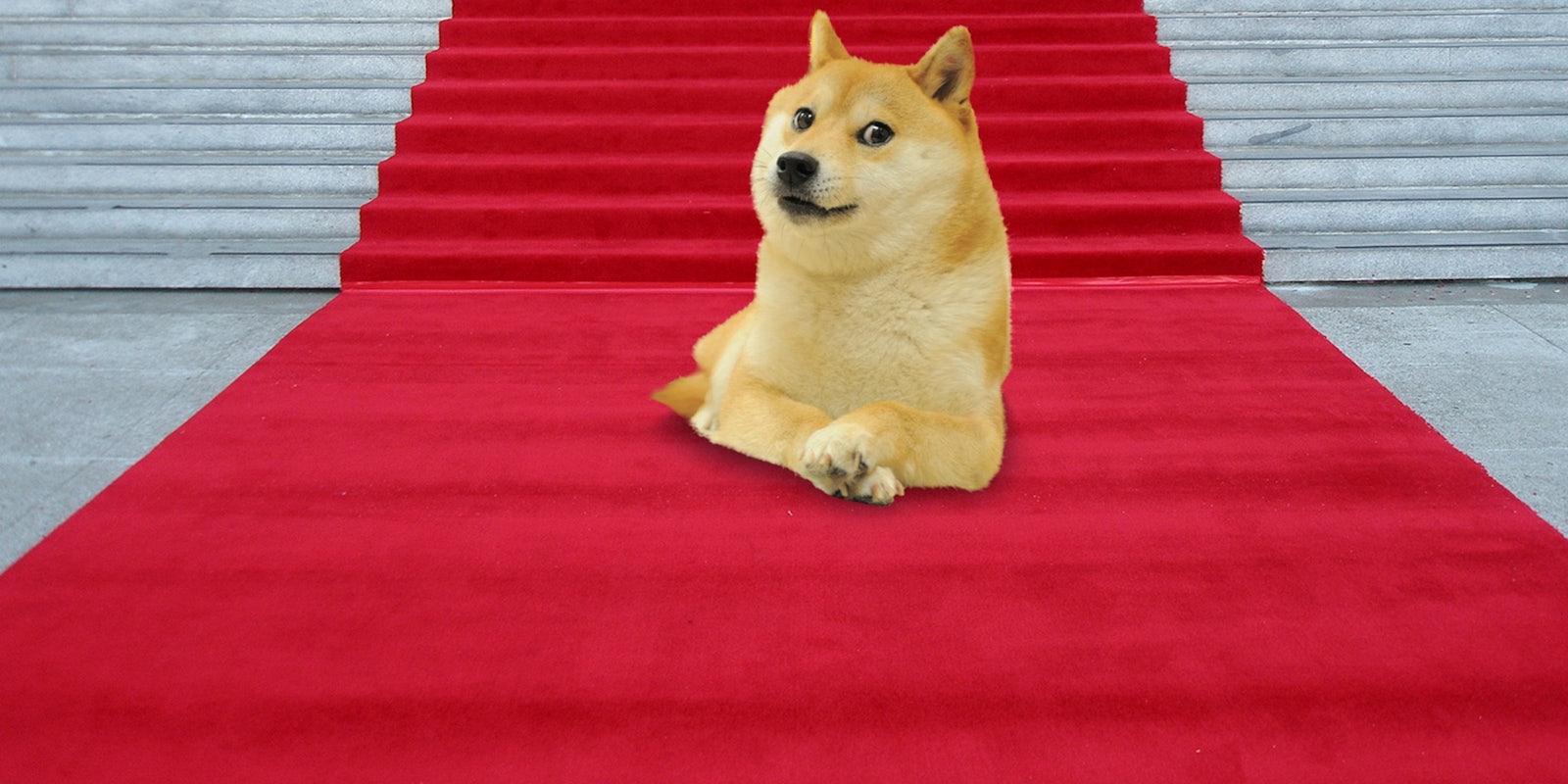In December of last year, I tracked down the Japanese owner of the Shiba Inu dog who inadvertently became the Doge meme. At the time, the article felt like a triumph. I gave the Internet what it was looking for, and the story went viral in return. The reward was that brief flash of Internet notoriety and rush of dopamine that comes with #engagement.
But for Atsuko Sato, the owner of the dog, the consequences were less positive. She was the target of unwanted attention that turned off some of her Japanese fans. Of course, I wrote about that aftermath as well—the opportunity seemed too good to pass up.
The pride in my work was fleeting, but the frustration of trying to document meme culture with articles that become irrelevant in a matter of weeks is something that stays with you; it’s a Sisyphean task. Another recent phenomenon makes it even harder: Memes have crossed into mainstream pop culture. Grumpy Cat has a movie deal; Seamless is co-opting “basic” for subway ads. As memes move faster, the job of the Web journalist becomes harder than ever.
A real Seamless ad pic.twitter.com/O4HBDeJWLR
— Jared Keller (@jaredbkeller) October 23, 2014
When Kenyatta Cheese launched the Know Your Meme database of Internet jokes and trends around 2007, it started off as a pursuit of idle curiosity. Through his work at Rocketboom around the first generation of the viral Internet when experiencing multimedia content online became a common experience, Cheese and his team constantly dredged up memes, and eventually decided to find out where they came from. These memes, he told me in a recent conversation, were “like folk art.” In other words, they were strange, unique, and anonymous: Flowing as they did out of a space of communal subculture just like patterned quilts or scrimshaw, their creators’ identities were hidden.
Yet these memes were starting to appear in mainstream venues. Back in 2012, this meant interstitials for Adult Swim or a few chance references in weird public service announcements. “No one was giving credit back to the original source; we felt that was important to do,” Cheese said. Thus, following up on the earlier work of sites like Encyclopedia Dramatica, Know Your Meme became the veritable meme encyclopedia it is today, with comprehensive listings of any quirk of Internet culture one could possibly come across. It’s an invaluable way to “map out spaces of interesting cultural creation and conversation,” as Cheese described it.

Grumpy Cat at VidCon 2014. Photo by Gage Skidmore (CC BY-SA 3.0)
I recapitulate the past only to show how different meme culture looks just two years later. The end result of a gradual shift, Internet culture these days no longer has any claim to being niche. We coddle our memes, nurturing them like children and applauding when one picks itself off the ground and goes viral. The Internet-native Grumpy Cat is our new Mickey Mouse, with movies and product tie-ins to match, made popular by the grace of Facebook’s massive audiences and sharing algorithms.
We’ve been awash in not just memes, but meme explainers, a new breed of article prized in the post–Know Your Meme era in which a journalist claims to trace a meme precisely back to its source. Where Know Your Meme took the approach of a careful anthropologist, charting data of a meme’s usage and long-term experience with the community it came from, meme explainers are the equivalent of parachute war reporting. The writer gets in, finds the target, and gets out as soon as possible, the prize of a scoop in hand.

What is the demand for such articles? It’s likely driven by a kind of artisanal impulse for reassurance that our favorite jokes are authentic. Now that memes have become so popular, we viewers are invested in knowing where they came from and how they reached us. Pinning memes down has become a kind of cultural arms race.
As much as we struggle to keep up with it, the task of comprehensively documenting memes is impossible. Know Your Meme and Encyclopedia Dramatica are useful as barometers of Internet culture that provide a detailed sense of what’s going on in Web communities as it happens, thanks to their crowd-sourced network of contributors. But the absurdity of the attempt is underlined by a Wikipedia article I recently stumbled upon, titled “List of Internet phenomena.” It categorizes the wide genre of things that happen online into subsections like “Images” (LOLcat, Goatse.cx), “Video” (Two Girls, One Cup), and “Other Phenomena” (Creepypasta).
The list will forever be outdated. It fails to live up to its grand title. Thankfully, it also admits it. At the top is a warning: “This is an incomplete list that may never be able to satisfy particular standards for completeness.”

President Obama and McKayla Maroney imitate the McKayla Is Not Impressed meme. Photo via Wikimedia Commons
The Wikipedia list reminds me of a short story by the writer Jorge Luis Borges, who might be a patron saint of the Internet for his investigation into concepts infinite in their complexity. In the 1946 story “On Exactitude in Science,” Borges recounts the tale of a map-making effort so detailed that “the map of a single Province occupied the entirety of a City, and the map of the Empire, the entirety of a Province.” Eventually, even those enormous maps weren’t enough. The map-makers “struck a Map of the Empire whose size was that of the Empire, and which coincided point for point with it.” Later generations, of course, “saw that that vast Map was Useless”—to look at the map was also to inhabit what it described in the real world, and thus obviate the need for a map.
Wikipedia-style dictionaries of memes are just such maps of the world the size of the world. If given unlimited resources, they would encompass and replace the entirety of the Internet with its own replica. And when we can already see the fruits of meme culture all around us, what’s the point? Memes aren’t just covered by the mainstream media, they are mainstream media. The Kermit Sips Tea meme showed up in a sports arena. Doge crept into Seamless ads and GOP tweets, and onto a Hot Topic shirt.
wow. such obamacare funding. oppose ted cruz. pic.twitter.com/bIgXNNpimi
— Rep. Steve Stockman (@StockmanSenate) December 23, 2013
Internet culture was once “this place that no one else really valued except for the community that created it,” Cheese told me. “Everyone else kind of dismissed it.” Now, the status of Internet memes has risen to the point that it’s harder to ignore them than it is to embrace and understand them. Everybody gets Grumpy Cat. Members of the communities that created it are even likely to be annoyed by its omnipresence.
If memes were once labeled, like Cheese said, as folk art, then now they might be described at least as pop art, a visual culture that adapts itself to its surroundings and spreads its influence in any form it can. Memes and their creators are celebrities that have moved far beyond the tight circles of Internet creators who made them famous. The publications that track them—Know Your Meme, Encyclopedia Dramatica, even Vox, of late—are less dictionaries than they are gossip sites, endlessly debating the latest cool thing. Until another media platform surpasses the Internet, it’s also unlikely that this transition will reverse.
The fundamental goal of Know Your Meme is “trying to figure out what’s worth documenting,” Cheese said. “What is meaningful and what isn’t is a really hard question to answer and one that [the site is] trying to figure out.” I must point out that this problem is far from unique to Internet memes. In fact, it’s the driving debate of culture itself, of which memes are just a small part.
Photo via D.C.Atty (CC BY 2.0) | Remix by Jason Reed


